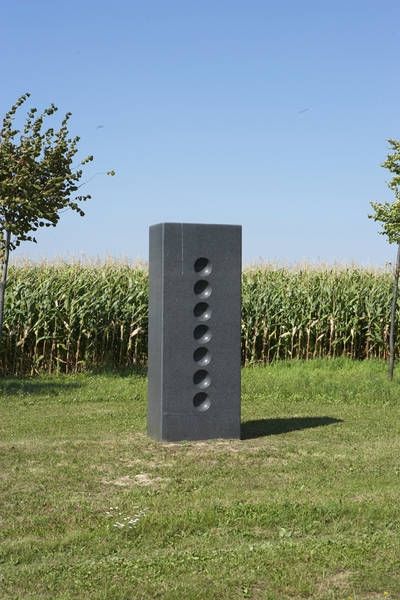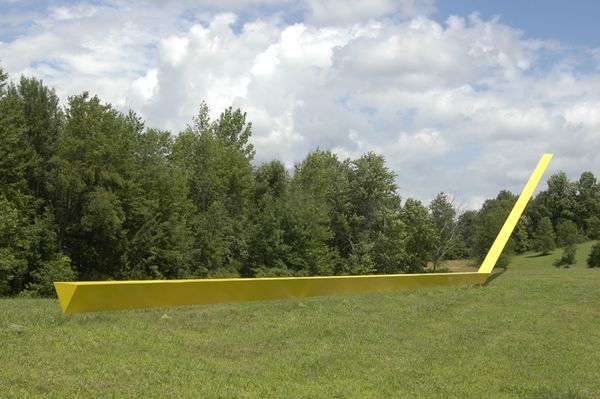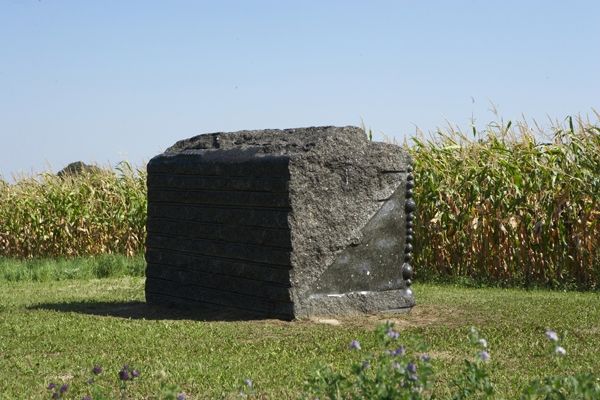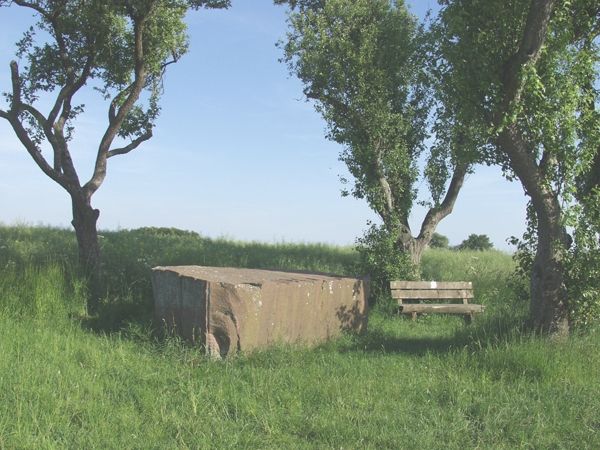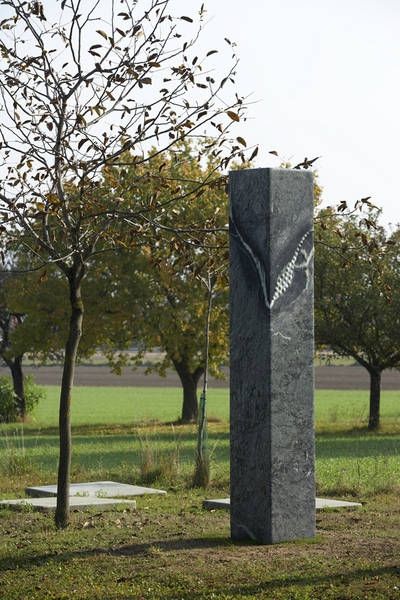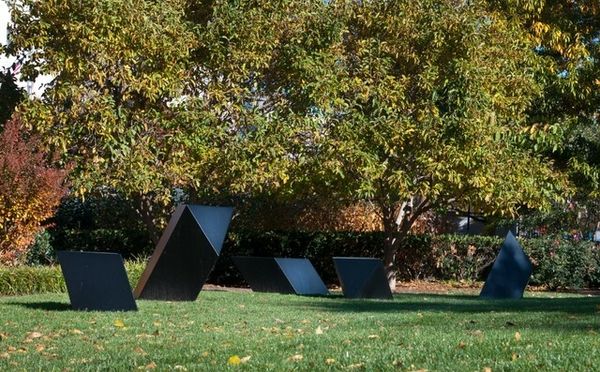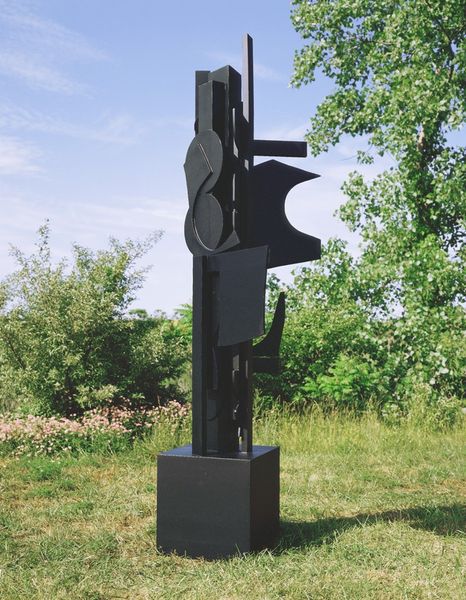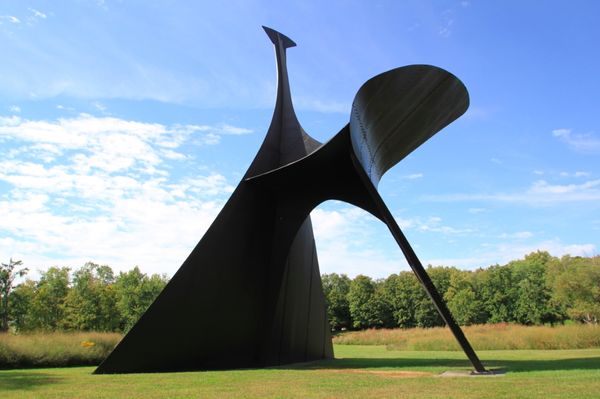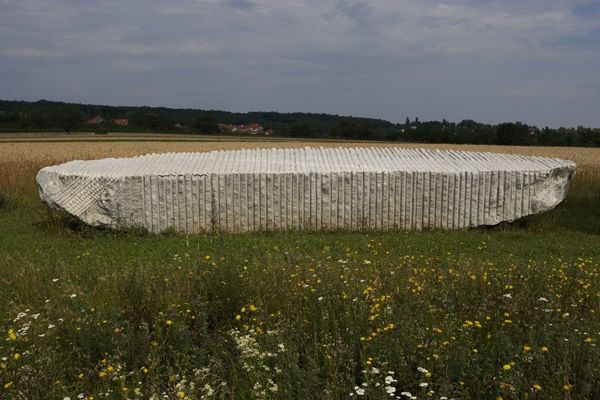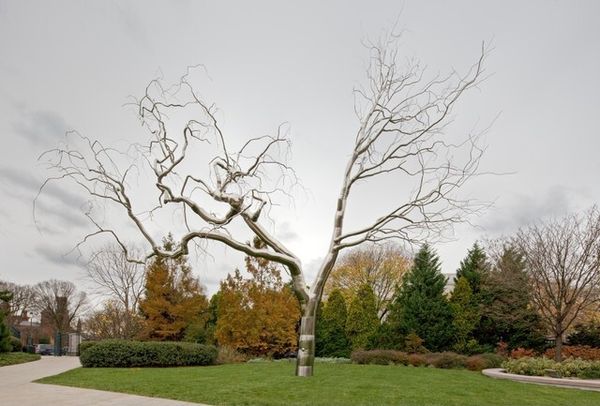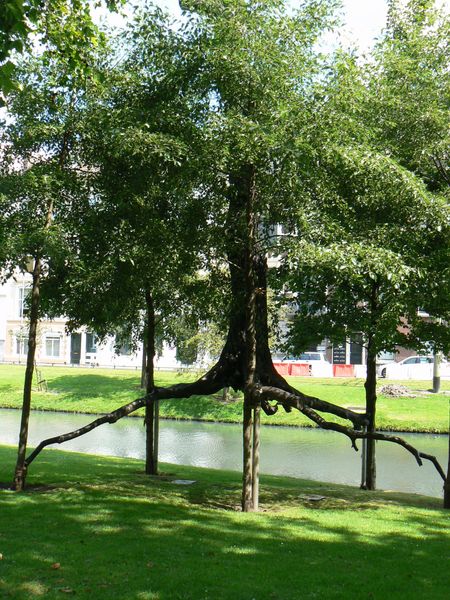
sculpture, site-specific, installation-art, wood
#
landscape
#
sculpture
#
site-specific
#
installation-art
#
wood
Copyright: Karl Prantl,Fair Use
Editor: So here we have Karl Prantl’s *Meditationsstein* from 1999, an outdoor sculpture made of stone and wood. It seems so peaceful, almost like a place for contemplation. What do you see in this piece? Curator: More than just a peaceful scene, I see a potent statement about humanity's place within nature. The sculpture integrates with the landscape, almost disappearing into it. Consider Prantl's choice of raw materials: stone, a symbol of permanence, contrasted with the ephemeral nature of the surrounding trees. Does this not raise questions about our own impermanence, our relationship to the environment? Editor: I see what you mean! It makes you think about how temporary we are in comparison to nature itself. But why call it a "meditation stone?" Curator: The title invites us to engage with it in a specific way. Think about the historical context: Prantl created this piece in a period of rapid globalization and technological advancement. It suggests a longing for something deeper, a connection to the earth and a slower pace of life. It could be interpreted as a commentary on the human condition. Editor: That's a really interesting point, putting it in the context of globalization. Does the placement have something to do with that too? It's so out in the open, in a field... Curator: Precisely! The open field serves as a deliberate contrast to the enclosed spaces of urban life. The sculpture is not just *in* nature, it becomes a *part* of it, highlighting a connection often lost in modern society. Editor: Wow, I didn’t see all of that at first! So it’s not just a nice bench, but a prompt to consider the deeper political issues of being human and our effect on the world. Curator: Absolutely. Art often serves as a mirror reflecting our own social anxieties and desires. This piece speaks to the collective yearning for sustainability and mindfulness within an unsustainable system. Editor: I see it completely differently now. Thanks for pointing that out! Curator: My pleasure. That's the power of art, isn’t it? To see the familiar anew, and to find unexpected connections between the personal and the political.
Comments
No comments
Be the first to comment and join the conversation on the ultimate creative platform.
